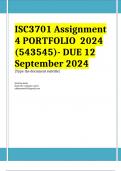Lecture notes
Class notes Environmental Economics Natural Resource and Environmental Economics, ISBN: 9780321417534
- Module
- Institution
- Book
Here you can find the class notes of the course environmental economics. Everything is fully covered in the notes from the lectures by Reyer Gerlagh at Tilburg University.
[Show more]











